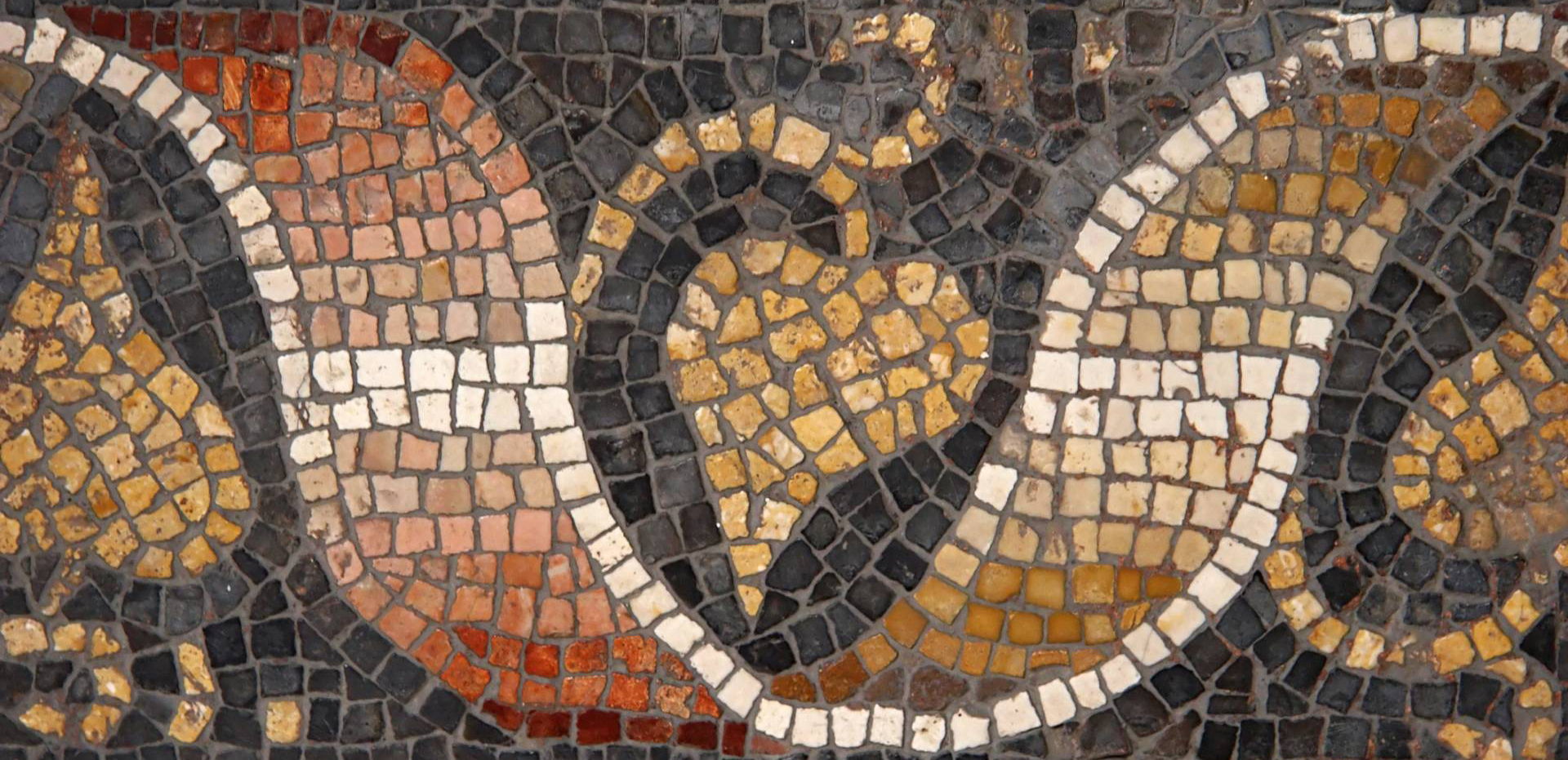SOMMARIO
A. EVENTI
1. EXHIBITION: “TO HEMETERON KALLOS. BYZANTINES EIKONES APO TE THESSALONIKE / OUR SACRED BEAUTY. BYZANTINE ICONS FROM THESSALONIKI” (ATHENS, 18.07-31.10.2019)
2. EXHIBITION: “ORNAMENT: FRAGMENTS OF BYZANTINE FASHION” (WASHINGTON, D.C, 10.09.2019-05.01.2020)
3. LEEDS INTERNATONAL MEDIEVAL CONGRESS (LEEDS, 06-09.07.2020): CALL FOR PAPERS FOR VARIOUS PANELS (SUBMISSION DEADLINES: 15.09.2019; 20.09.2019)
4. SEMINAIRE: “EDITION DE DOCUMENTS PAPYROLOGIQUES EN GREC D’EPOQUE PTOLEMAIQUE ET ROMAINE” (PARIS, 25.09.2019)
5. WORKSHOP “DIGITALES EDIEREN IN DER KLASSISCHEN PHILOLOGIE” (MUENCHEN, 25-27.09.2019)
6. EUROPEAN DIPLOMA IN MEDIEVAL STUDIES 2019/2020 (ROME, 28.10.2019-31.05.2020; APPLICATION DEADLINE: 30.09.2019)
7. CONVEGNO INTERNAZIONALE: “SPAZIO SACRO E ICONOGRAFIA. LIMITI, SFIDE, RESPONSABILITA'” (OTRANTO, 03-05.10.2019)
8. SEMINAIRE: “MANUSCRITS EN MEDITERRANEE. SEMINAIRE DE RECHERCHE AUTOUR DE TRAVAUX EN COURS SUR LES MANUSCRITS GRECS ET ORIENTAUX” (PARIS, 03.10.2019-04.06.2020)
9. SEMINAIRE: “INITIATION A’ L’EDITION DE TEXTES PATRISTIQUES GRECS” (PARIS, 17.10.2019)
10. INTERNATIONAL CONFERENCE: “MEANING BETWEEN THE LINES: ALLEGORY AND HERMENEUTICS IN GREEK IMPERIAL AND LATE ANTIQUE LITERATURE” (DUBLIN, 06-07.02.2020): CALL FOR PAPERS (SUBMISSIONE DEADLINE: 21.10.2019)
11. CONVEGNO “ACCADEMIA NAZIONALE DEI LINCEI: IL CONTRIBUTO DEL COMITATO CLASSICI” (ROMA, 24-25.10.2019)
12. CONFERENCE: “AROUND THE EL ESCORIAL LIBRARY. A MEETING POINT BETWEEN SPECIALISTS OF ISLAMIC MANUSCRIPTS” (PARIS, 24-25.10.2019)
13. 20. WISSENTSCHAFTLICHE TAGUNG DER GESELLSCHAFT “ORBIS AETHIOPICUS”: “DIE REZEPTION EUROPAEISCHER BILDER IN DER IKONOGRAPHIE AETHIOPIENS – DAS BEISPIEL DES EVANGELIARS VON MARTULA MARYAM” (GOTHA, 25-27.10.2019)
14. GRADUATE AND EARLY CAREER WORKSHOP: “ARMENIA AND BYZANTIUM WITHOUT BORDERS III” (VIENNA, 08-10.05.2020): CALL FOR PAPERS (SUBMISSION DEADLINE: 31.10.2019)
15. CONVEGNO INTERNAZIONALE: “PAGANI E CRISTIANI: CONFLITTO, CONFRONTO, DIALOGO. LE TRASFORMAZIONI DI UN MODELLO STORIOGRAFICO” (ROMA, 13-15.11.2019)
16. 12TH ANNUAL LAWRENCE J. SCHOENBERG SYMPOSIUM ON MANUSCRIPT STUDIES IN THE DIGITAL AGE (PHILADELPHIA, 21-23.11.2019)
17. INTERNATIONAL CONFERENCE: “THE CHRISTIAN EAST IN THE LATIN WEST. ASSEMANI’S ‘BIBLIOTHECA ORIENTALIS’ (1719-2019), 300TH ANNIVERSARY” (VATICAN CITY, 7-8.11.2019; BEIRUT-KASLIK, 28-30.11.2019)
B. PUBBLICAZIONI
1. “DIALOGHI CON BISANZIO. SPAZI DI DISCUSSIONE, PERCORSI DI RICERCA” (2019)
C. NOTIZIE
1. POSTDOCTORAL POSITION WITHIN THE RESEARCH GROUP “EFFECTS OF CONTACT AND EXCHANGE IN THE EURO-MEDITERRANEAN” AT THE LEIBNIZ SCIENCECAMPUS “BYZANTIUM BETWEEN ORIENT AND OCCIDENT” (APPLICATION DEADLINE: 15.09.2019)
2. THREE PHD POSITIONS “REWRITING GLOBAL ORTHODOXY” IN NEIMEGEN (APPLICATION DEADLINE: 15.09.2019)
3. UNIVERSITA’ DI ROMA “TOR VERGATA”: POSTO PER PROFESSORE ASSOCIATO DI LINGUA E LETTERATURA ARABA (DEADLINE: 19.09.2019)
4. BANDO DI AMMISSIONE PER IL XXXV CICLO DEL DOTTORATO DI RICERCA IN METODI E METODOLOGIA DELLA RICERCA ARCHEOLOGICA E STORICO-ARTISTICA / PHD COURSES IN METHODS AND METHODOLOGIES IN THE ARCHAEOLOGICAL AND ART HISTORICAL RESEARCH AT THE UNIVERSITA’ DI SALERNO (APPLICATION DEADLINE: 24.09.2019)
5. PHD POSITION IN JEWISH STUDIES IN BERN (APPLICATION DEADLINE: 30.09.2019)
6. BANDO PER ASSEGNO DI RICERCA NELL’AMBITO DEL PROGETTO “DOCUMENTING MULTICULTURALSM: CO-EXISTENCE, LAW AND MULTICULTURALISM IN ADMINISTRATIVE AND LEGAL DOCUMENTS OF NORMAN AND HOHENSTAUFEN SICILY, C. 1060-C. 1266 (DOCUMULT): THE GREEK SOURCES” AT THE UNIVERSITY OF PALERMO (APPLICATION DEADLINE: 09.10.2019)
7. TSITER-KONTOPOULOU SHORT-TERM RESEARCH STIPENDS, DEPARTMENT OF BYZANTINE AND MODERN GREEK STUDIES, UNIVERSITY OF WIEN (APPLICATION DEADLINE: 31.10.2019)
8. POSITION AS PROGRAM COORDINATOR FOR BYZANTINE STUDIES AT DUMBARTON OAKS (DEADLINE: OPEN UNTIL FILLED)
9. ON LINE CATALOGUE OF BYZANTINE COINS
